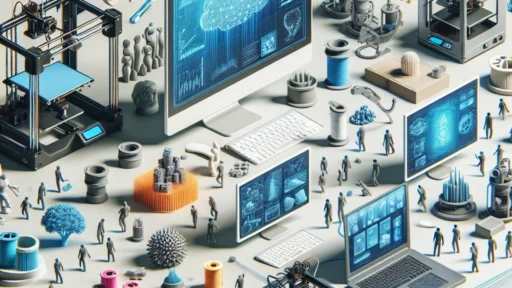A Beginner’s Guide to Setting Up Your 3D Printer
So, you’ve decided to take the plunge and invest in a 3D printer—exciting times ahead! Whether it’s for creating prototypes, artistic projects, or just some cool gadgets for your home, 3D printing opens up a world of possibilities. However, stepping into this new realm can be a bit daunting. Fear not! This beginner’s guide will help you navigate the essentials of setting up your 3D printer like a pro.
Unboxing Your Printer
Once you have your new 3D printer delivered, the first thing to do is unbox it. Be sure to keep all the packaging materials as you may need them later for storage or transport. As you remove each component, check the manual for a list of parts to ensure everything is present. Most printers come with the basics—printer body, print bed, power supply, and sometimes even filament to get you started.
Setting Up the Printer
This stage is crucial since a poorly set up printer can lead to all sorts of printing issues down the line. Start by finding a stable and level surface where your printer will reside. Make sure it’s close enough to a power outlet but away from direct sunlight and sources of vibration (like your washing machine).
Once you’ve placed your printer, connect the power supply and the data cable (if it has one). Some models will also have a touchscreen interface for easy navigation, which can make setup a breeze.
Leveling the Print Bed
Now comes the nitty-gritty part: leveling the print bed. A well-leveled bed is essential for a successful print, as it ensures that the nozzle is the correct distance from the surface during printing. Many printers come with an auto-leveling feature, which can make this process simpler. However, if your printer doesn’t have this capability, you’ll need to do it manually.
Here’s a simple method for manual bed leveling:
- Heat the nozzle and the print bed to their operational temperatures to account for any thermal expansion.
- Move the nozzle to the corners of the print bed, placing a piece of paper between it and the bed.
- Adjust the bed height until you feel a slight friction when sliding the paper. Repeat this for all corners and the center of the bed.
Ensure that these adjustments are done carefully, as a misaligned bed can lead to squished or uneven prints.
Loading Filament
With the bed level, it’s time to load the filament. Depending on your printer model, this process can vary somewhat, but here’s a general guide:
- Preheat the nozzle to the filament’s melting temperature—check the specifications as this varies depending on your material (PLA, ABS, PETG, etc.).
- Cut the end of the filament at an angle to facilitate easier insertion.
- Feed the filament into the extruder (the part that pushes the filament through) until you see it begin to ooze from the nozzle.
Once the filament is flowing nicely, you’re almost ready to print!
Software Setup
Next up: software. Most 3D printers rely on slicing software to convert 3D models into paths the printer can understand. Some popular slicing software options include Cura, PrusaSlicer, and MatterControl. You’ll need to download one of these and configure it for your printer.
Here’s a quick rundown of typical steps:
- Import a 3D model (you can find tons of free models on websites like Thingiverse or GrabCAD).
- Adjust the print settings according to your needs. Key settings include layer height, infill density, and print speed.
- Slice the model and save the G-code file to your computer or directly to an SD card/USB stick (depending on your printer).
The First Print
With everything set up, it’s high time for your first print! Start with something simple, like a calibration cube, designed specifically for this purpose. This way, you’ll get a sense of how well your printer is calibrated without diving into a complex project.
Once the print is underway, be nearby to monitor the progress and watch your creation come to life.
Troubleshooting Common Issues
Like any new tech, you may run into some issues along the way. Common ones include poor adhesion to the print bed, stringing, or layer misalignment. Don’t get discouraged; these hurdles are part of the learning curve. Many online communities, like Reddit or specific 3D printing forums, are filled with enthusiasts who are happy to share solutions.
Setting up your 3D printer for the first time can feel overwhelming, but with a little patience and practice, you’ll become quite the expert in no time. So grab your filament, dive into your first project, and enjoy the incredible world of 3D printing. Before you know it, you’ll be creating unique pieces that reflect your creativity. Happy printing!






